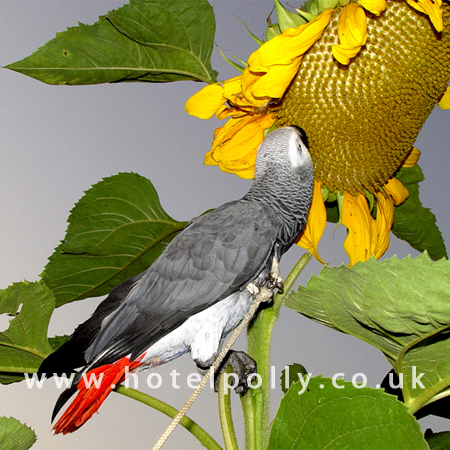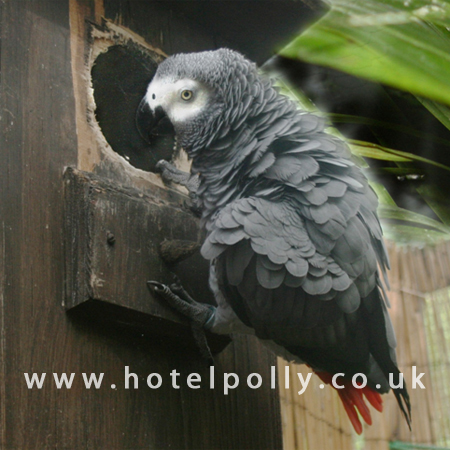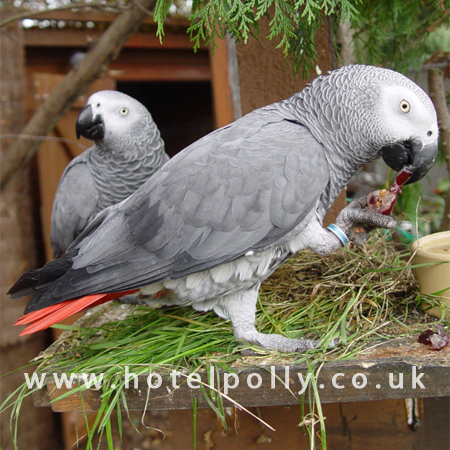Congo African Grey - Profile & Care Guide
Posted by Anguel Iordanov on 21st May 2014
Common name: Congo African Grey
Latin name: Psittacus erithacus erithacus
Length: 27 - 33cm/13 inches
Weight: 400 - 600 grams
Life Span: 50 years or more
Origin: Central Africa, Tanzania, Western Kenya
Noise Level: Medium



Intelligence
African greys are extremely intelligent birds. One of the most famous African Greys is the now - deceased Alex, a Congo African Grey studied for years by Dr. Irene Pepperberg in the USA. Alex had been shown to have the ability to process information and make appropriate choices with the correct choice of words, and understand concepts such as colour or shape. Alex was thirty-one years old when he died, which is relatively young, for a healthy African Grey Parrot.
Talking ability
Greys are excellent mimics, and are usually known for their excellent talking skills, some with a recorded capacity of over 2000 words. Even those that don't repeat words are very adept at repeating household noises such as the telephone or doorbell, often well enough to confuse their owners! Most greys have a large collection of sounds they repeat. According to Dr. Pepperberg in her studies with Alex, greys have a unique capacity for putting their words and sounds into the right context as opposed to simply repeating them, showing their overall intelligence.
Greys have been described as being the emotional equivalent of a two year old human child and having the intelligence of a five year old. This means they need a lot of attention and patience, along with a good deal of guidance to acceptable behaviour. And, they can be a challenging handful at times!
Feather Plucking
African greys have a reputation of being prone to feather plucking. Greys will sometimes resort to feather plucking and in worse case scenarios other forms of self mutilation for a variety of physical and physiological reasons, and also if their emotional needs are not being met or they are stressed. It should be noted that any bird that is plucking its feathers should definitely have a thorough examination with an avian vet in order to rule out a physical cause first. Any increased tendency greys might have toward this problem is likely due to their intelligence and needs for attention and stimulation."
Housing for your Congo African Grey Parrot
- You will need a large cage for your grey.
- A good recommendation would be a minimum in the area of 91 cm x 60 cm x 121 cm tall, but bigger is definitely better when it comes to housing parrots.
- The bar spacing should be 2 cm to 2.5 cm (best to get 2 cm spacing for a Timneh).
- At least part of the cage should have horizontally oriented bars to allow the grey to climb on the sides of the cage.
- The cage should be placed in a part of the house where the bird will have lots of contact with people, but ideally not in the most hectic area of the home.
- Keep the cage away from windows where they would receive direct sunlight (to prevent overheating), away from draughts, and not too close to central heating vents or air conditioning ducts.
- A selection of perches should be provided - varied in size and composition. Different varieties of perches can include beak and nail trimming perches and also the very popular Java multi-branches perches. Java multi branches and finch branches can be attached to either the inside, top or side of your bird's cage. Java multi-branches are made from the wood from coffee trees which have been baked for at least one month to make the perches incredibly hard wearing
- Provide a good selection of appropriate toys - the right size and checked for safety concerns (parts that could be swallowed, strangulation or entrapment hazards). Having a good selection of toys on hand and rotating them through the cage a few at a time can help to provide entertainment and stimulation.
- Try and invest in a good play gym, and plan on having your African grey spend a significant amount of time on the outside of his or her cage daily.
Feeding your Congo African Grey Parrot
- Variety is the key here.
- A diet of pellets should form the foundation of the diet, but should be supplemented with a variety of fresh fruits and vegetables as well as grains and proteins.
- A small amount of seed mix can be fed as well, keeping in mind that seeds have some nutritional value and place in the diet but are largely fattening (high proportion of sunflower seeds) and poorly balanced as a main part of the diet.
- If your bird is reluctant to try new foods, time and patience is the key here.
- African greys are somewhat prone to calcium deficiency, so calcium levels should be monitored at a yearly vet check. Calcium supplements should not be used except under the advice of an avian vet, but it can be beneficial to feed a variety of calcium rich foods such as leafy green vegetables (kale, mustard greens, Swiss chard, spinach).
- Fresh clean water should be available at all times. Food and water dishes should be washed daily.
In summarising, African greys are magnificent and amazing parrots, but are not the ideal bird for everyone. Potential owners really do need to carefully evaluate their ability to commit to the needs of these birds for their expected life span, and be sure they understand the best way to care for these wonderful parrots.
With thanks to Dorothy Schwarz for supplying us with images for this article

